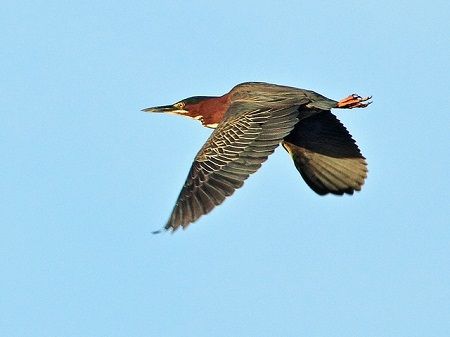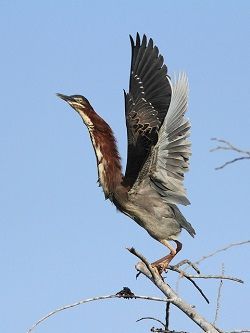- Revenue Cycle Management
- COVID-19
- Reimbursement
- Diabetes Awareness Month
- Risk Management
- Patient Retention
- Staffing
- Medical Economics® 100th Anniversary
- Coding and documentation
- Business of Endocrinology
- Telehealth
- Physicians Financial News
- Cybersecurity
- Cardiovascular Clinical Consult
- Locum Tenens, brought to you by LocumLife®
- Weight Management
- Business of Women's Health
- Practice Efficiency
- Finance and Wealth
- EHRs
- Remote Patient Monitoring
- Sponsored Webinars
- Medical Technology
- Billing and collections
- Acute Pain Management
- Exclusive Content
- Value-based Care
- Business of Pediatrics
- Concierge Medicine 2.0 by Castle Connolly Private Health Partners
- Practice Growth
- Concierge Medicine
- Business of Cardiology
- Implementing the Topcon Ocular Telehealth Platform
- Malpractice
- Influenza
- Sexual Health
- Chronic Conditions
- Technology
- Legal and Policy
- Money
- Opinion
- Vaccines
- Practice Management
- Patient Relations
- Careers
From Patients to Patience: A Retired MD's Birdwatching Passion
A retired physician has found a rich second act as a birder and nature photographer. He jokes that he doesn't know how he finds time to be retired.

All photos courtesy of Ken Schneider
Some people build nest eggs for retirement.
But in the case of Kenneth (Ken) Cole Schneider, MD, and his wife of 55 years, Mary Lou, nests have helped build the richness of their retirement—actual birds’ nests, that is.
Most recently, it’s been an enormously special—and simply enormous—eagles’ nest in Pembroke Pines, FL, around which many of their hours have revolved. From 1994 to 2004, the pursuit of elusive rosy-finches in the Sandia Mountains of New Mexico held the focus of their avian-centric activities.
“I was a birder as a kid,” recalls Ken, now 79, of his Rutherford, NJ, youth. “I had a couple of buddies from Boy Scouts who were also interested, and I’d sometimes go with the Audubon Society. But,” he says dryly, “you didn’t really brag about it” for fear of nerd-labeling in college (St. Peter’s University, Jersey City, Class of 1957) and medical school (Seton Hall in Jersey City—now Rutgers New Jersey Medical School—Class of 1961).
After a stint in family medicine, Ken was drafted in 1966. Commissioned as an officer in the US Public Health Service (serving in what is now the Centers for Disease Control), he was stationed on the US/Mexico border near El Paso, TX. “The quarantine program really got me interested in public health,” he says.
Although he completed a general preventive medicine residency in New Orleans, he also earned an MPH at Tulane University. Following some time studying tropical medicine in Central America, he returned stateside for good, settling in Dallas, with a part-time clinical practice in the US Navy and full-time work in quality assurance for the USPHS.
“I was very lucky I was able to stay in Dallas my entire career,” Ken states. He chose to retire in 1993, however, spurred by the end, the previous year, of a long, difficult journey for Mary Lou.
She had been a stay-at-home mom for all 4 of their children, but especially their youngest, Glen, who had lost his ability to walk and talk in a very rare encephalopathy reaction to having chickenpox around the same time as a measles vaccine at age 15 months. (Ken remains fully pro-vaccination.) After Glen died at age 24, Ken—who relates the story with deep emotion—decided it was time to phase out of full-time work as well.

The Schneiders built their dream home in Cedar Crest, NM, near Albuquerque, and almost immediately Ken began volunteering at the Rio Grande Nature Center State Park in Albuquerque and the US Forest Service in the Sandia Mountains (often accompanied by Mary Lou).
They also frequented Sandia Crest, 10,678 feet above sea level, to try to see 3 elusive species of rosy-finches, “3 gaping holes in our life lists of birds we have seen,” as Ken recounts on the “Why Call Me ‘Rosyfinch’?” page of the website he subsequently created, www.rosy-finch.blogspot.com.
Finally, in December 1999, thanks to a sequence of events that began when a construction worker left his sandwich remains in a snow bank near the Crest House Restaurant, some Black, Brown-capped, and Gray-crowned rosy-finches had a fine dinner—and Ken and Mary Lou had a most satisfying triple sighting.
They continued their quests to feed (with US Forest Service permission) and sight rosy-finches for years. “They are rarely seen by birders because they live in the highest mountains, in inaccessible places,” Ken explains. “They are birds of concern, too, because their mountains are losing their snowcaps because of climate change.”
Rosy-finches became one of Ken’s true passions. He and Mary Lou organized and coordinated the logistics of a program—still extant—to ensure that specially constructed feeders on Sandia Crest remain full and maintained for these birds. To chronicle his (and the birds’) journeys in words and pictures, Ken created his rosy-finch website.
(Incidentally, Ken shares candidly, “I used to ‘hate’ photographers—they used to make us wait, make us be quiet” during birding excursions. “Then my son-in-law gave me his old Canon Rebel, then he gave me the next generation, the 30D. Now I have a 60D. And I’m one of ‘them,’” he laughs. He sure is: On March 30 this year, his shot of a yellow-crowned night-heron in full display was spotlighted on the Natural Habitat Adventures website Wildlife Photo of the Day.)
The couple loved their life in New Mexico—not only for the rosy-finches, but especially for their church, Holy Child, in the nearby town of Tijeras. They sang in the choir and, memorably each December, in Las Posadas, the musical Christmas tradition of the Spanish-speaking world.
But a plea pulled them to Florida in 2004. Daughter Jackie, son-in-law Roly Orama, and their daughters Graciela and Carina—2 of their youngest (of 8) grandchildren—were living there. Both Roly and Jackie deeply wanted Mary Lou and Ken nearby for the girls’ sake.
The Schneiders couldn’t say no.
However, literally as Ken was packing up the last of their belongings in New Mexico, Roly telephoned to say he had received a promotion—and with it, a required relocation to Chicago.
Although sorely disappointed, the Schneiders completed the move to Miramar, FL, anyway, confident all the Oramas would visit often (they do)—and they purchased a summer residence in Illinois, too.

Ken and Mary Lou Schneider
Ken and Mary Lou became active with birding groups in Florida, especially in their home county of Broward, but they had the biggest surprise of their birding lives on Dec. 4, 2007. Ken was astounded to spot 2 bald eagles “mating on the rooftop of a house just across the lake from our home,” as he recollects in the “Protecting a Neighborhood Bald Eagle Nest” page on his website.
Quickly, he posted what he’d witnessed on the Tropical Audubon Society’s Web page, because the eagles’ amorous activities were actually big news. Although Florida is home to 5,000-6,000 bald eagles, “there had not been a record of an active bald eagle nest in Broward County since several years before [the use of] DDT was [banned in the area] in the early 1970s,” Ken has written.
But the location of the eagles’ nest was a mystery. It took several months, but a local middle-school teacher, Kelly Smith, finally found it, about 150 feet from a main thoroughfare in neighboring Pembroke Pines—with one eaglet inside. “That discovery ignited all the interest,” Ken recalls.
In a contest sponsored by the middle-school students, children named the adult eagles Pride and Joy, and it became very popular to try to spot them in their nest, about 60 or 70 feet up in an Australian pine.
Ken has become the go-to guy for all matters eagle in Broward County, serving on the Pembroke Pines Mayor’s Bald Eagle Sanctuary Steering Committee, photographing them extensively, answering questions, and chronicling the eagles in their own Local Eagle Nest section on his blog.

This past March, Mary Lou and Ken were genuinely thrilled when, during a visit to show a guest the nest and, possibly, its residents—which means standing on the other side of the 4-lane road, looking up with binoculars and simply hoping for a sighting—the eagle jackpot was hit: One of the eagles, later pretty confidently identified by Ken as Pride, was soaring as majestically as one would imagine, bringing branches to the nest, which already weighs, literally, about a ton.
“The Australian pine, though technically a tree, is actually an invasive weed,” notes Ken, who worries a bit that an exceptionally strong South Florida storm could fell it.
While Joy died in October 2014, after a life in which she produced 13 known young, 11 of which are believed to have survived, Pride does have a new mate, who was in spotted in the nest that March day. The consensus is that she’s young and inexperienced, but “hopefully [in 2016] there will be babies,” Ken says.
In the meantime, the Schneiders remain extremely active, physically and mentally. They walk for 3 hours almost every morning, and sing in the choir of their current church, St. John XXIII in Miramar.
“I don’t know how I find time to be retired,” Ken jokes. More seriously, he adds, “It’s the saddest thing if your life is only your work. Have an interest,” he implores other MDs contemplating retirement.
Listen well: When it comes to knowing how to make the most of your post-professional years, Ken Schneider, MD, is no featherweight.
